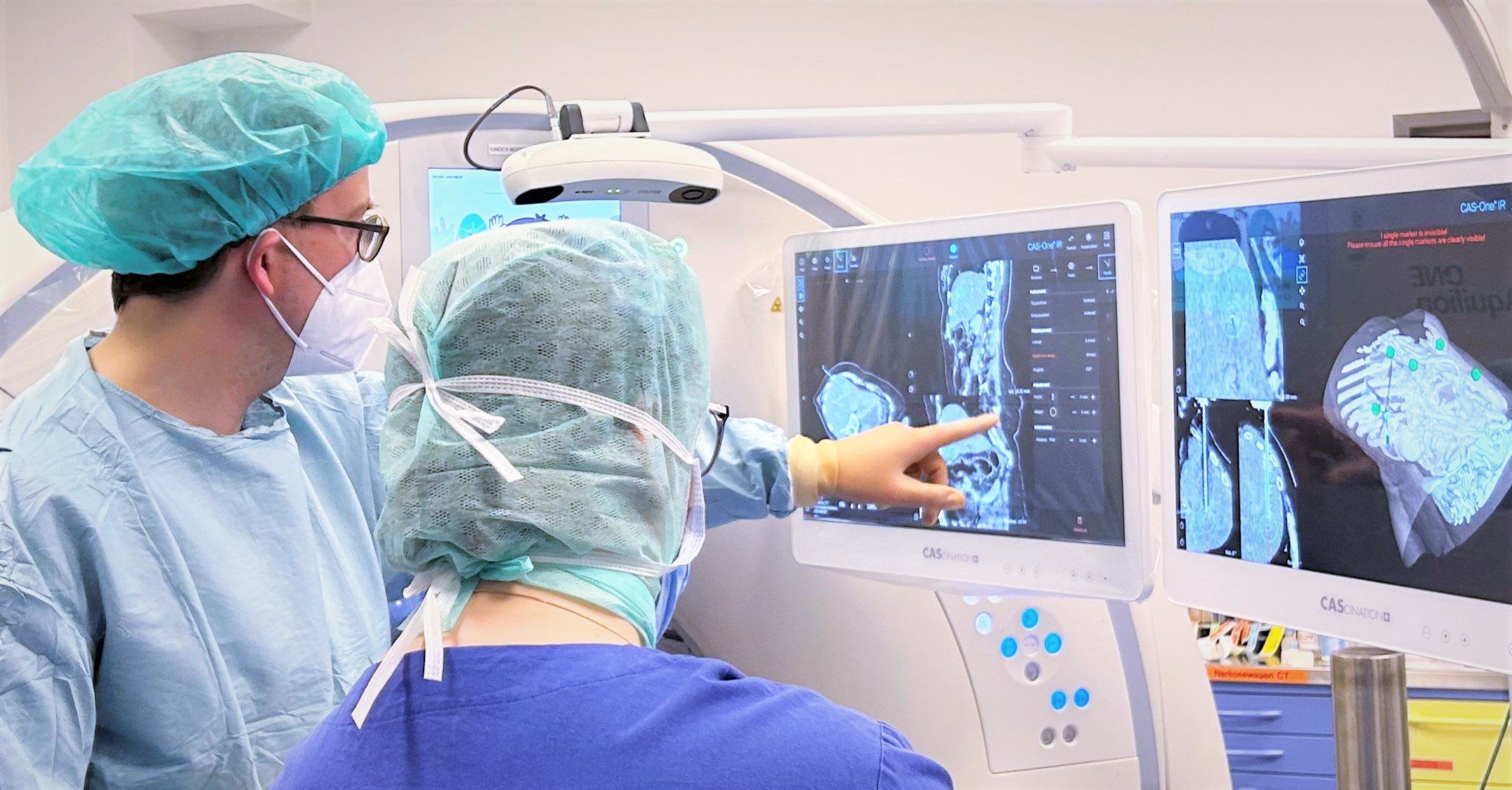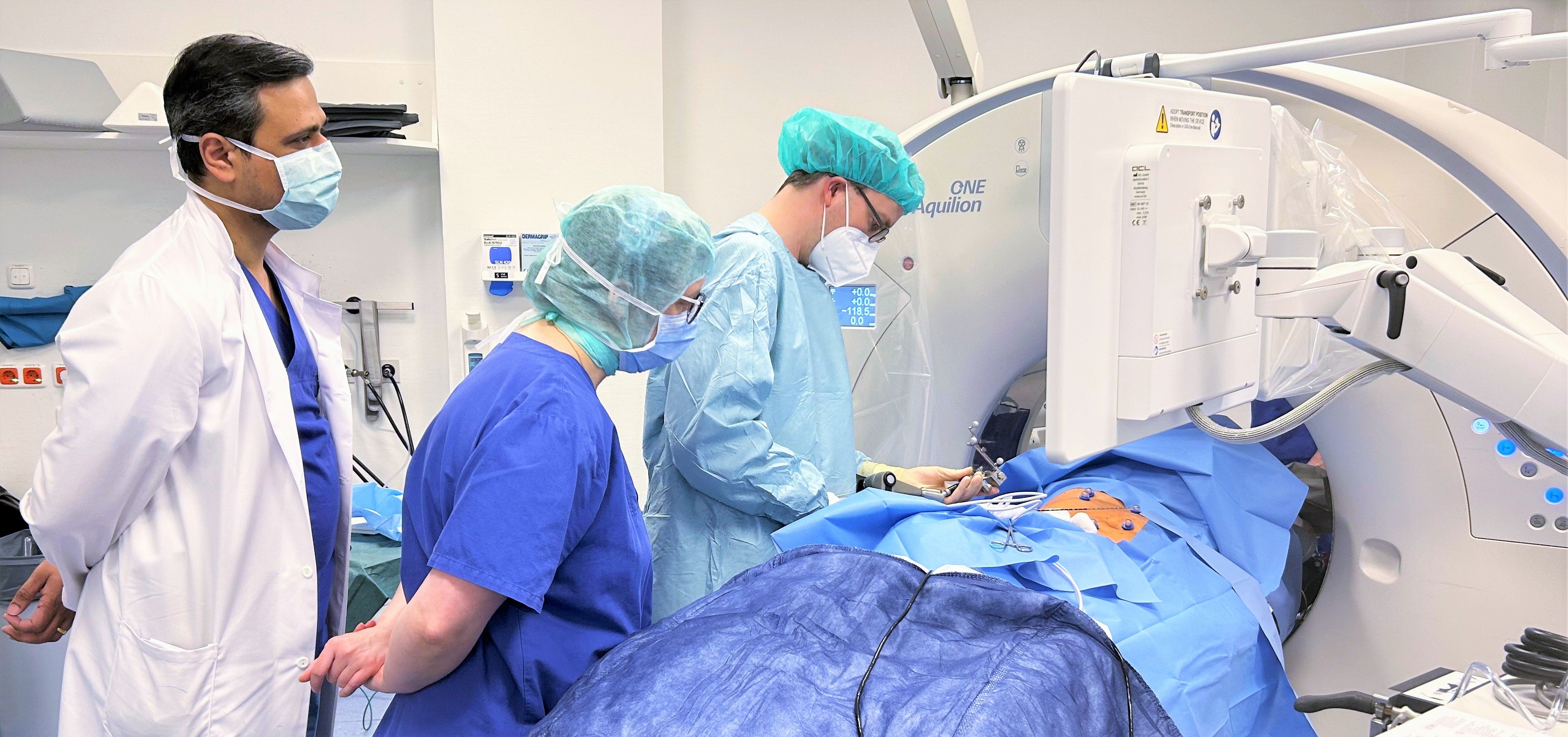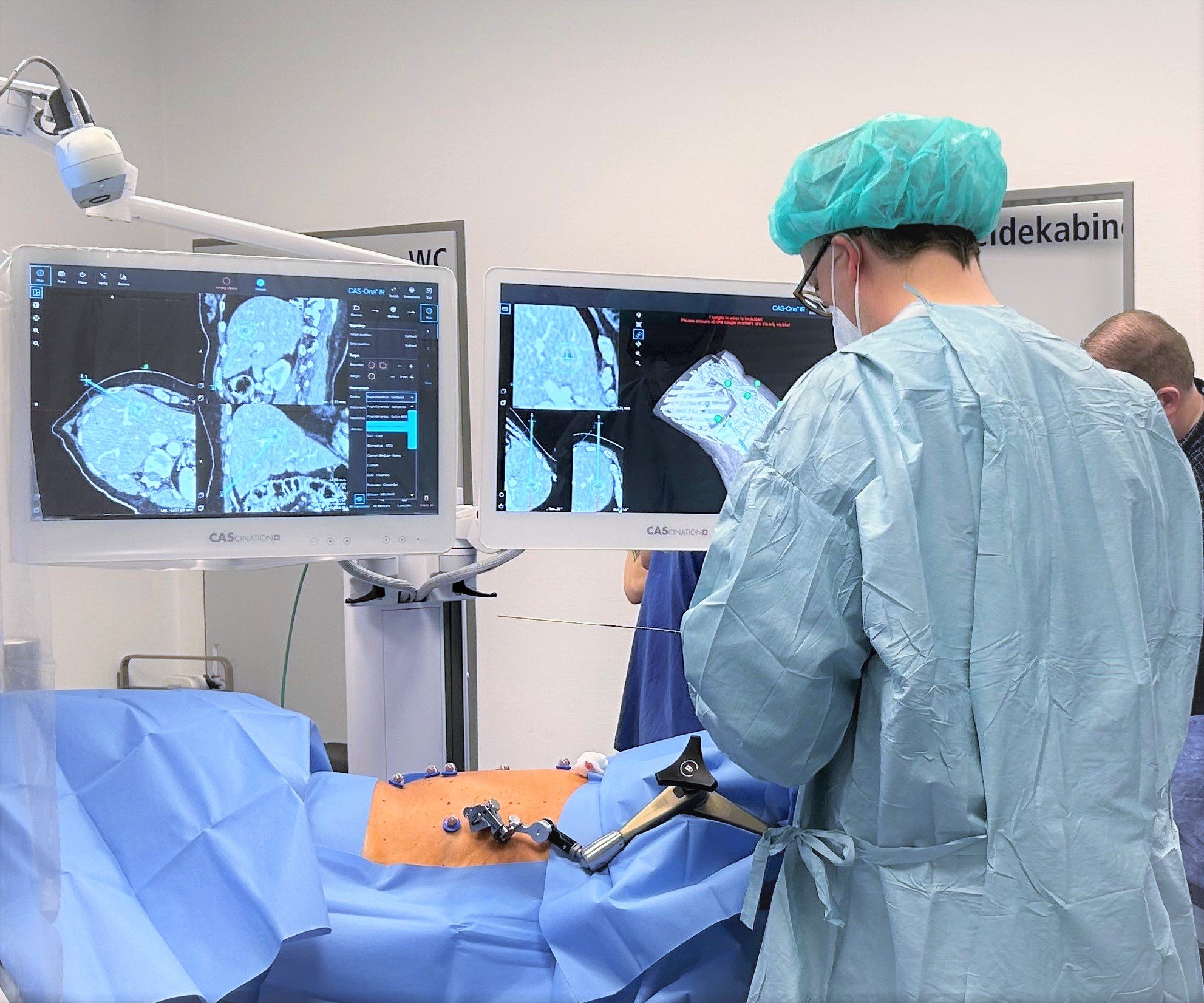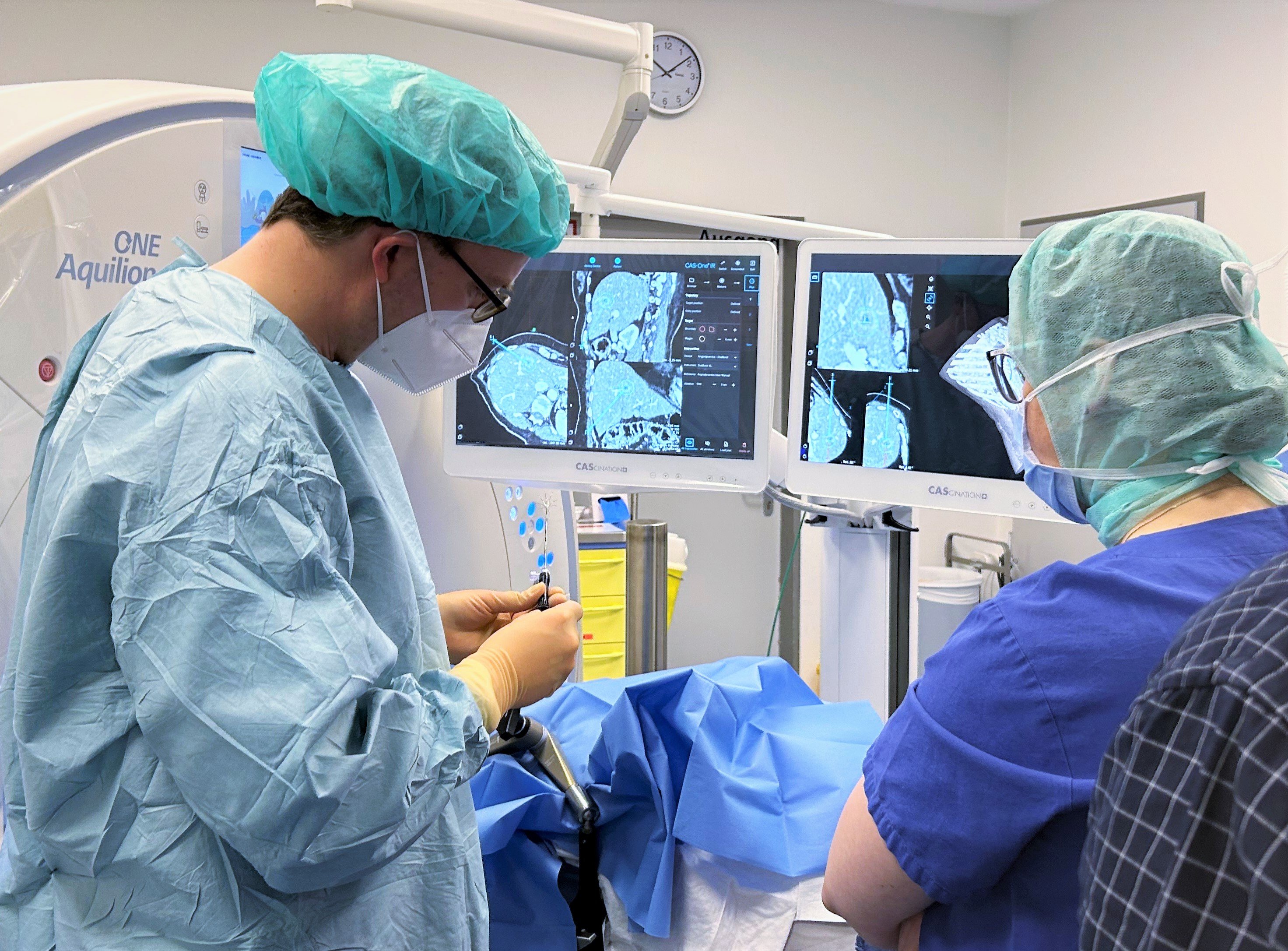Quality Ablation is now in Oldenburg
On October 1, 2022, Prof. Dr. Martin Maurer started his position as Head of the Institute for Diagnostic and Interventional Radiology at the University Clinic of Oldenburg, Germany. Half a year after his appointment, he has treated the first patients with CAS-One® IR. We asked him how this came about and what vision he has with the navigation and decision support system for minimally invasive tumor treatments.

Professor Maurer, how did the treatment of the first patient go?
As I expected, very good. With the system, we were able to plan the treatment, place the ablation needles at the desired location, and could verify the treatment results instantly. Thanks to AblaSure, the quantitative margin assessment tool, we decided to re-treat selected areas of the liver. This allowed us to ensure that the entire tumor tissue was destroyed.
However, I am happy that everything went according to plan. Introducing a new treatment method with the clinical team requires good preparation and training so that everyone knows when to do what. I am confident that we will further optimize the process during the next treatments.
Why have you decided to use CAS-One® IR in Oldenburg?
I have already used the system in the past 7 years at the University Clinic in Bern, Switzerland. During this time, we treated more than 700 patients. Numerous scientific studies have shown very positive effects of Quality Ablation with CAS-One® IR, relative to the conventional "freehand" ablation method: shorter and more standardized treatment times, very low complication and local recurrence rates, and same overall patient survival relative to surgical resection. In addition, the system allows us to treat tumors that are typically untreatable with conventional ablation, e.g. tumors in complicated locations or tumors that are not visible with conventional imaging modalities (CT or ultrasound).
Therefore, it was clear to me that the patient in Oldenburg should also benefit from this procedure.

What have you done to start ablation treatments with the system in Oldenburg?
It is worth mentioning that ablation of tumors in abdominal organs such as the liver, lungs, and kidneys has so far not been an established treatment method in Oldenburg. However, this minimally invasive method has experienced a strong upswing over the last years, mainly because of technological advances and good clinical results.
To answer your question, I introduced my colleagues from HPB surgery and oncology to this project and my plans, even before I started in Oldenburg. They gave me their full support. I also received valuable support from the administrative management team. Thanks to them, we were able to introduce the system as a permanent solution within a very short period of time.
What is your plan for ablation treatments in Oldenburg?
Building up a systematic ablation program takes some time. When the CAS-One® IR System was introduced in Bern, we treated about 20 patients with ablation per year. 4 years later it was already more than 100 patients. My goal is to build up a similar program here in Oldenburg.

What does it require?
It will require good clinical results with this treatment method, which I have no doubts about, given my experience with the system. It will be also important to work closely with my colleagues at the multidisciplinary tumor board to offer patients the best suitable treatment. In addition, the referring doctors will be further introduced to this innovative treatment method and realize this is better than a conventional tumor ablation. This positive information will then also disseminate to the population of the city of Oldenburg and the surrounding area. For example, in Bern, we were treating patients from entire Switzerland.
The next software version of CAS-One® IR is based on an AI solution. What potential do you see in it?
To my understanding, with the artificial intelligence algorithms, organs, important vessel structures, and tumors will be automatically segmented and visualized. This will simplify and accelerate the treatment planning and improve the safety of the needle trajectories. This will be particularly helpful for less experienced radiologists. In addition, the algorithm of the verification module AblaSure® will be further improved. This enables us to assess the treatment results even more reliably and to make better decisions about any necessary re-treatment immediately.

Further Information:
Prof. Dr. Maurer has co-authored 5 scientific publications that feature the use of CAS-One® IR. You can read them here:

